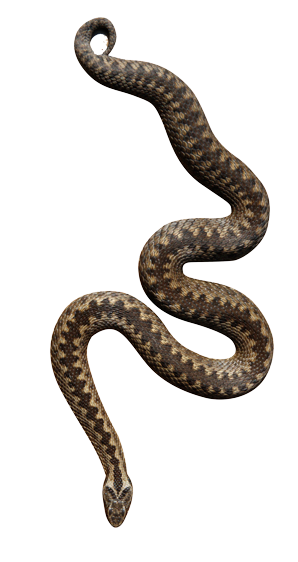Blog - Snake bites in the UK? The risks ADD up!
All jokes aside, Adder bites can be nasty and unpleasant for your pet…
Luckily, Adders are the only venomous snake in the UK. They become active in the warmer months, following a winter of hibernation – so you should be most alert on spring and summertime walks.
Pets are usually bitten on the legs, head or neck after disturbing an unsuspecting Adder. Their bites can result in rapid, painful swelling and bruising. You may also be able to identify two small puncture holes in the centre of the swelling. If your pet has been bitten on their leg, they may also become lame and begin to limp. Bites can be ‘dry’ (no venom injected) or venomous. If the bite is venomous, you may notice extra signs and symptoms in your pet such as; lethargy, vomiting, panting, collapse, pale gums, drooling, bleeding, abnormal heart rhythm and kidney problems.
What to do if you think your pet has been bitten?
- Don’t panic!
- Do not interfere with the bite or apply a tourniquet.
- Don’t try to catch or kill the snake.
- Seek veterinary advice – carry your pet to your car (if practical) and don’t delay treatment – even if your pet appears well.
Most dogs will make a quick and complete recovery, provided they are treated promptly, so never delay in seeking veterinary advice!
How can I prevent my pet from being bitten?
It is difficult to eliminate the risk of Adder bites completely (as we know pets love to roam), but you can take extra caution during summer months when snakes are more active. Be careful when walking with your pet in long grass, sandy dunes or around rocks or stone walls where Adders tend to sleep. Keep your dog on a short lead when walking in these areas.
Know what to look for:
- Adders have a dark brown/black zig-zag pattern along their back and may have a pale grey to olive green colour elsewhere.
- Adult snakes are 50-60cm long and have vertically slit pupils (other native non-venomous snakes have round pupils).
No Description
